Harald Feldmann's
Power kiting page
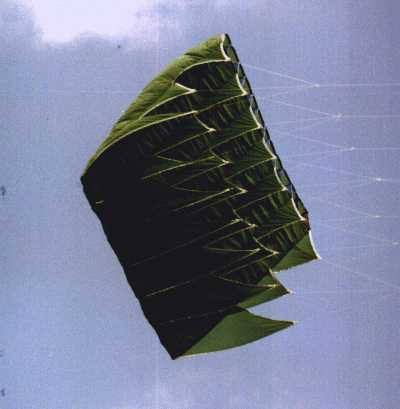 Parafoil
Parafoil
This homebuilt foil is green with silver lining around the flaps, it is made out of reinforced nylon (not ripstop). It flies best at windforce 3 and above. It has 7 rows of flaps. The surface is about 2 square meters. With dimensions of about 1.65m wide, 1.33m deep and 27cm high.
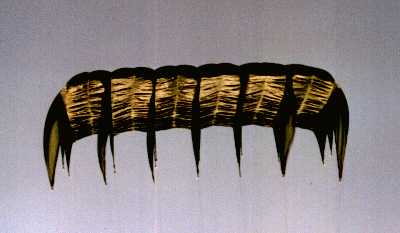 Parafoil (bottom view)
Parafoil (bottom view)
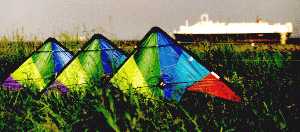
Delta
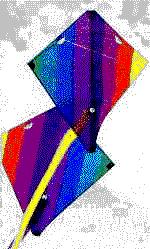 Peter
Powell
Peter
Powell
I started out kiting with one of these diamond shaped kites in the rainbow colors. It is a 98 cm high Peter Powell design with a 13 meter tail. By now the ripstop nylon has been battered so much by wind the structure has bent a bit and it looks more like an Eddy. It can now actually fly without the tail and perform acrobatics. This is a 2-liner stunt-kite which I fly on 50 meters 30 daN nylon lines.
NASA-Wing
My other kite is a NASA-wing 230, with 4 square meters surface. The NASA wing is a very nice and 'simple' kite design. It exists of one 'sail' which is tuned by many lines into a shuttle shape like the shadow of a shuttle you hit around places in a game of batminton. The NASA wing has a strong pull. In windforce 4 it can lift you off the ground if you're not careful. I fly it on 2x 135 daN lines.
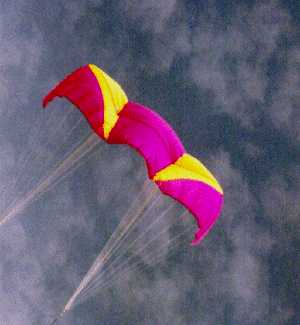
NASA-Wing (bottom view)
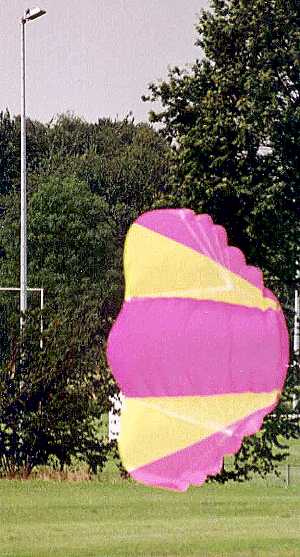
The Bottomview (left) shows its peculiar shape quite nicely. The NASA wing is called like that (actually it's called NPW5) because it was a design for NASA which was meant to be used as a break- parachute for spacecraft. As it turned out, it could also be used as a very effective kite, and fortunately for everyone the shape is catching on and becoming more and more popular. The wing has a very small turning radius and instant steering response, compared to more 'traditional' shapes like Flexifoils and Peels. A small change in steering yields a strong response from the kite.
Parapent (below) and Sputnik 4 (top)
As a bonus, there is a picture of a red Parapent. This is what is generally known as a 'paraglider'. It is pretty big and looks very nice. This is not mine, but I had the opprtunity to make a picture of it together with my Sputnik. Let's face it, it looks gorgeous !
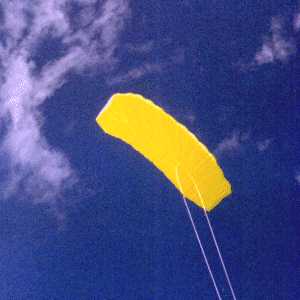 Sputnik 4
Sputnik 4
My latest kite is a homebuilt Sputnik 4. Being a traction kite it has a lot of pull. With a wingspan of 4.68 meters it is a big kite which was made out of ultralight material. Building the Sputnik 4 is a lot of work. The flashy colour really shines in sunny weather... In comparison to the NASA wing, this Sputnik needs big arm movements to make turns.

Another good page on kites is Peter Peter's Website in the Netherlands